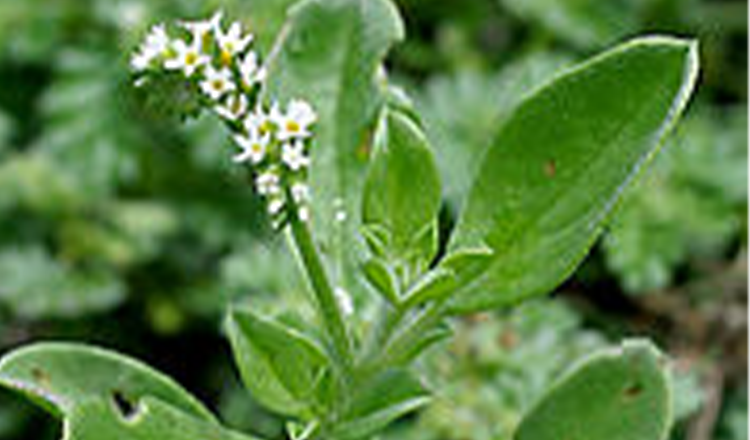Heliotropium

Heliotropium /ˌhiːliəˈtroʊpiəm, -lioʊ-/[3] is a genus of flowering plants in the borage family, Boraginaceae. There are around 325 species in this almost cosmopolitan genus,[4] which are commonly known as heliotropes (sg. /ˈhiːli.ətroʊp/[clarification needed]). It is highly toxic for dogs and cats.
The name “heliotrope” derives from the old idea that the inflorescences of these plants turned their rows of flowers to the sun.[5] Ἥλιος (helios) is Greek for “sun”, τρέπειν (trepein) means “to turn”. The Middle English name “turnsole” has the same meaning.
A Classical myth, told in Ovid’s Metamorphoses, imagines that the water nymph Clytie, in love with the sun god Helios, was betrayed by him. Wasting away, she transformed into the heliotrope, whose flowers supposedly always face the sun.
Several heliotropes are popular garden plants, most notably garden heliotrope (H. arborescens). Some species are weeds, and many are hepatotoxic if eaten in large quantities due to abundant pyrrolizidine alkaloids. There have been cases of canine death due to over-ingestion of this toxic plant.[6][7] Some danaine butterflies, such as male queen butterflies, visit these plants, being attracted to their pyrrolizidine alkaloids.[8] Though it is not palatable and most animals will completely ignore it, there have been cases of horses, swine and cattle being poisoned due to contamination of hay.[9]
Caterpillars of the grass jewel (Freyeria trochylus), a gossamer-winged butterfly, feed on H. strigosum.[citation needed]
The sap of heliotrope flowers, namely of European heliotrope (H. europaeum), was used as a food coloring in Middle Ages and Early Modern French cuisine.[citation needed]
One of the most famous ragtime piano melodies is “Heliotrope Bouquet”, composed in 1907 by Louis Chauvin (the first two strains) and Scott Joplin (the last two strains).
Garden heliotrope is grown in Southern Europe as an ingredient for perfume.[10]
The purplish facial rash of dermatomyositis is called “heliotrope rash” because it resembles E. arborescens.[11]
